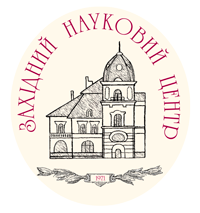Lyudmyla PISKACH1, Ganna MACHNOVETS 2, Galyna MYRONCHUK2
1Department of Inorganic and Physical Chemistry, Lesya Ukrainka Eastern European National University, Voli Ave. 13, 43025 Lutsk, Ukraine 2Department of Solid State Physics and Information-Measuring Technologies, Lesya Ukrainka Eastern European National University, Voli Ave. 13, 43025 Lutsk, Ukraine
DOI: https://doi.org/10.37827/ntsh.chem.2018.53.016
THE TlInS2–ZnS SYSTEM AND THE PROPERTIES OF THE TlInS2:Zn2+ CRYSTAL
Interactions of components in the TlInS2–ZnS systems were investigated by physico-chemical analysis methods. The system is of the eutectic type with limited mutual solid solubility of the starting components: L ↔ α' + β (α' and β are solid solution ranges of HT modification of TlInS2 and LT modification of ZnS, respectively). The eutectic point coordinates are 90 mol.% TlInS2 /10 mol.% ZnS and 997 K. The system features peritectoid processes of the phase transitions of TlInS2 and ZnS according to the reactions α' + β ↔ α at 886 K; β' ↔ L + β at 1301 K. The solid solution range of TlInS2 extends to 5 mol.% ZnS at 670 K, while the solid solubility based on ZnS is less than 2.5 mol.% TlInS2. A TlInS2 single crystal doped with Zn was grown by the horizontal version og Bridgman-Stockbarger method with the starting composition 98 mol.% TlInS2 and 2 mol.% ZnS. The structure of the grown crystal was determined by X-ray powder method: monoclinic symmetry, space group C2/c. Spectral distribution of the absorption coefficient in the 100–300 K range was investigated, and bandgap energy for direct permitted transitions was estimated. The absorption coefficient in the energy region below the band edge is an exponential function of the photon energy which indicated the participation of the tails of the density of states in the formation of intrinsic optical transitions. Doping leads to some decrease of both direct and indirect bandgap energy compared to the original TlInS2 crystal (2.21–2.30 eV vs 2.28–2.55 eV). Such decrease of Eg may be explained by the mutually complementary processes upon the introduction of 2 mol.% ZnS to TlInS2, namely statistical substitution of In atoms by Zn atoms, and the increase of the concentration of thallium vacancies (VTl). We consider these processes as the dominating factors in the bandgap energy variations.
Key words: phase equilibria, single crystal, crystal structure, chemical bonding.
References:
-
1. Panich A. M. Electronic properties and phase transition in low-dimensional semiconductors. J. Phys. Condens.
Matter. 2008. Vol. 20. Р. 93202-1–293202-42. (https://doi.org/10.1088/0953-8984/20/29/293202).
2. Kashida S., Kobayashi Y. X-ray study of the incommensurate phase of TlInS2. J. Phys. Condens.
Matter. 1999. Vol. 11. Р.1027-1035. (https://doi.org/10.1088/0953-8984/11/4/010).
3. Pliushch O. B., Sheleg A. U. Polytypism and phase transitions in the crystals of TlInS2 and
TlGaSe2. Kristallografiya. 1999. Vol. 44(5). P. 873–877. (in Russian) (doi:10.1134/1.171106).
4. Borovoy N. A., Gololobov Y. P., Isayenko G. L., Stepanishchev N. B. Specifics of the phase transformations of
the polytypes of the monoclinic modification of ТlInS2. Neorgan. Mater. 2009. Vol. 45(1). P. 3–8 (in
Russian) (https://doi.org/10.1134/S0020168509010014).
5. Alekperov O. Z., Najafov A. I. Polytypes of the monoclinic ТlInS2. Neorgan. Mater. 2009. Vol.
45(1). P. 9–14. (in Russian) (https://doi.org/10.1134/S0020168509010026).
6. Marahashli M., Yukes N. S. Determination of trapping center parametrs of TlInGaS4 layered crystals
by thermally stimulated current measurements. J. Alloys Comp. 2006. Vol. 417(1–2). С. 23. (https://doi.org/10.1016/j.jallcom.2005.09.024).
7. Sardarova N. S., Barkhalov B. S., Nurullayev Y. G. et al. Electric properties of the crystals of various
compositions of the solid solutions TlInS2–TlInEuS2. Nauka, Technika i Obrasovaniye. 2016. Vol. 11(29). P. 6–9.
(in Russian).
8. Sheleg A. U., Chumak V. A., Gurtovoy V. G. et al. Crystallographic and magnetic characteristics of the solid
solutions of the Tl(InS2)1–x(FeS2)x system. Izvestiya Akad. Nauk
Belarusi, Series Phys.-Math. Sci. 2013. Vol. 4. P. 38–43. (in Russian).
9. Henkel W., Hochheimer H. D., Carlone C. et al. High-pressure Raman study of the ternary chalcogenides TlGaS2,
TlGaSe2, TlInS2 and TlInSe2. Phys. Rev. B 1982. Vol. 26(6). P. 3211–3221. (https://doi.org/10.1103/PhysRevB.26.3211).
10. Hahn H., Wellman B. Über ternare chalkogenide des Talliums mit gallium und indium. Naturwis. 1967. Vol.
54(2). Р. 42. (https://doi.org/10.1007/BF00680166).
11. Range K.-J., Engert G., Muller W. A., Weiss A. Hochdrucksynthese und Kristallstrukturen von TlInS2-II und
TlInS2-III. Z. Naturforsch. B. 1974. Vol. 29. Р. 181–185 (https://doi.org/10.1515/znb-1974-3-410).
12. Aliyev S. N., Najafov A. I., Alekperov O. Z. Obtaining and investigation of the hexagonal modification of
TlInS2. Izv. Akad. Nauk USSR. Neorgan. Mater. 1991. Vol. 27. P. 621–622. (in Russian).
13. Isaacs T. I. Determination of the crystal symmetry of the polymorphs of thallium indium disulphide TlInS2.
Z. Krist. 1975. Vol. 141(1–2). P. 104–108. (https://doi.org/10.1524/zkri.1975.141.1-2.104)
14. Alekperov O. Z., Nadzhafov A. I. Polytypes of Monoclinic TlInS2. Inorg. Mater. 2009. Vol. 45(1). Р. 7–12.
(https://doi.org/10.1134/S0020168509010026).
15. Babanly M. B., Kuliyev A. A. Investigation of the Tl2S–In2S3 system. Zhurn. Neorg. Khim. 1977. Vol. 22(22).
P. 471–475. (in Russian).
16. Abrikosov N. K., Bankina V. F., Poretzkaya L. V. et al. Semiconductor Chalcogenides and Their Alloys, Nauka,
Moscow, 1975. (in Russian).
17. Olekseyuk I. D., Parasyuk O. V. Obtaining and Investigation of Inorganic Semiconductor, Vezha, Lutsk, 2005.
(in Ukrainian).
18. X-ray diffractometer DRON 4-13. User Manual. Burevestnik, Saint Petersburg, 1998. (in Russian).
19. Leica VMHT AUTO. Operating instructions. Leica Microsystems GmbH, Vienna, 2001.
20. Vilke K.-T. Crystal Growth. Nedra, Leningrad, 1977. (in Russian).
21. Tairov Y. M., Tsvetkov V. F. Technology of Semiconductor and Dielectric Materials. Vysshaya Shkola, Moscow,
1990. (in Russian).
22. Akselrud L., Zavalij P. Yu., Grin’ Yu. N. et al. CSD-Universal program package for single crystal or powder
structure data treatment. Mater. Sci. Forum. 1993. Vol. 133. P. 335-338. (https://doi.org/10.4028/www.scientific.net/MSF.133-136.335).
23. Ukhanov Y. C. Optical Properties of Semiconductors, Nauka, Moscow, 1977. (in Russian).
24. Pankove J. I. Optical Processes in Semiconductors. Prentice-Hall, New Jersey, 1971.
25. Tauc J. Optical Properties of Solids (ed. F. Abeles). North-Holland Publ. Co., Amsterdam, 1972. – 277
p.
26. El-Nahass M. M., Sallam M. M., Abd Al-Wahaba A. H. S. Optical and Photoelectric Properties of TlInS2 Layered
Single Crystals Curr. Appl. Phys. 2009. Vol. 9(2). P. 311–316 (https://doi.org/10.1016/j.cap.2008.02.011).
27. Kerimova E., Mustafaeva S., Guseinova D. et al. The Influence of Hydrostatic Pressure on the Electrical
Conductivity and Optical Properties of Chain-Layered TlInSe2 and TlInSe2–TlInS2 Solid Solutions. Phys. Stat.
Sol. (a). 2000. Vol. 179. P. 199–203. (https://doi.org/10.1002/1521-396X(200005)179:1<199::AID-PSSA199>3.0.CO;2-W).
28. Gasanly N. M. Coexistence of Indirect and Direct Optical Transitions, Refractive Indices, and Oscillator
Parameters in TlGaS2, TlGaSe2, and TlInS2 Layered Single Crystals. J. Korean Phys. Soc. 2010. Vol. 57(1). P.
164–168. (https://doi.org/10.3938/jkps.57.164).
29. Allakhverdiev K. R., Mammadov T. G., Suleymanov R. A., Gasanov N. Z. Deformation effects in electronic
spectra of the layered semiconductors TlGaS2, TlGaSe2 and TlInS2. J. Phys.: Cond. Mat. 2003. Vol. 15. P.
1291–1298. (https://doi.org/10.1088/0953-8984/15/8/313).
30. Qasrawi A. F., Gasanly N. M. Optical properties of TlInS2 layered single crystals near the absorption
edge. J. Mater. Sci. 2006. Vol. 41. P. 3569–3572. (https://doi.org/10.1007/s10853-005-5618-0).
31. Abay B., Guder H. S, Efeoglu H., Yogurtcu Y. K. Influence of temperature and phase transitions on the
Urbach’s tails of absorption spectra for TlInS2 single crystals. J. Appl. Phys. 1998. Vol. 84(7). P.
3872–3879. (https://doi.org/10.1063/1.368566).
How to Cite
Piskach L., Machnovets G., Myronchuk G. SYSTEM Tb–Ni–C AT 800 °C. CRYSTAL AND ELECTRONIC STRUCTURE OF TbNiC2 SINGLE CRYSTAL Proc. Shevchenko Sci. Soc. Chem. Sci. 2018 Vol. LIII. P. 16-23.
Download the pdf
